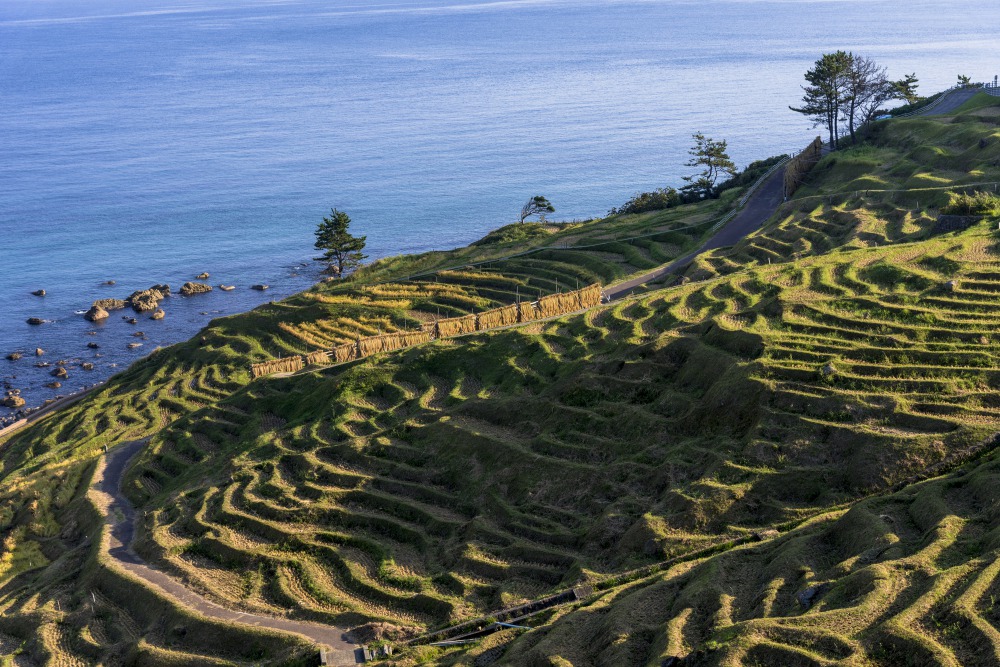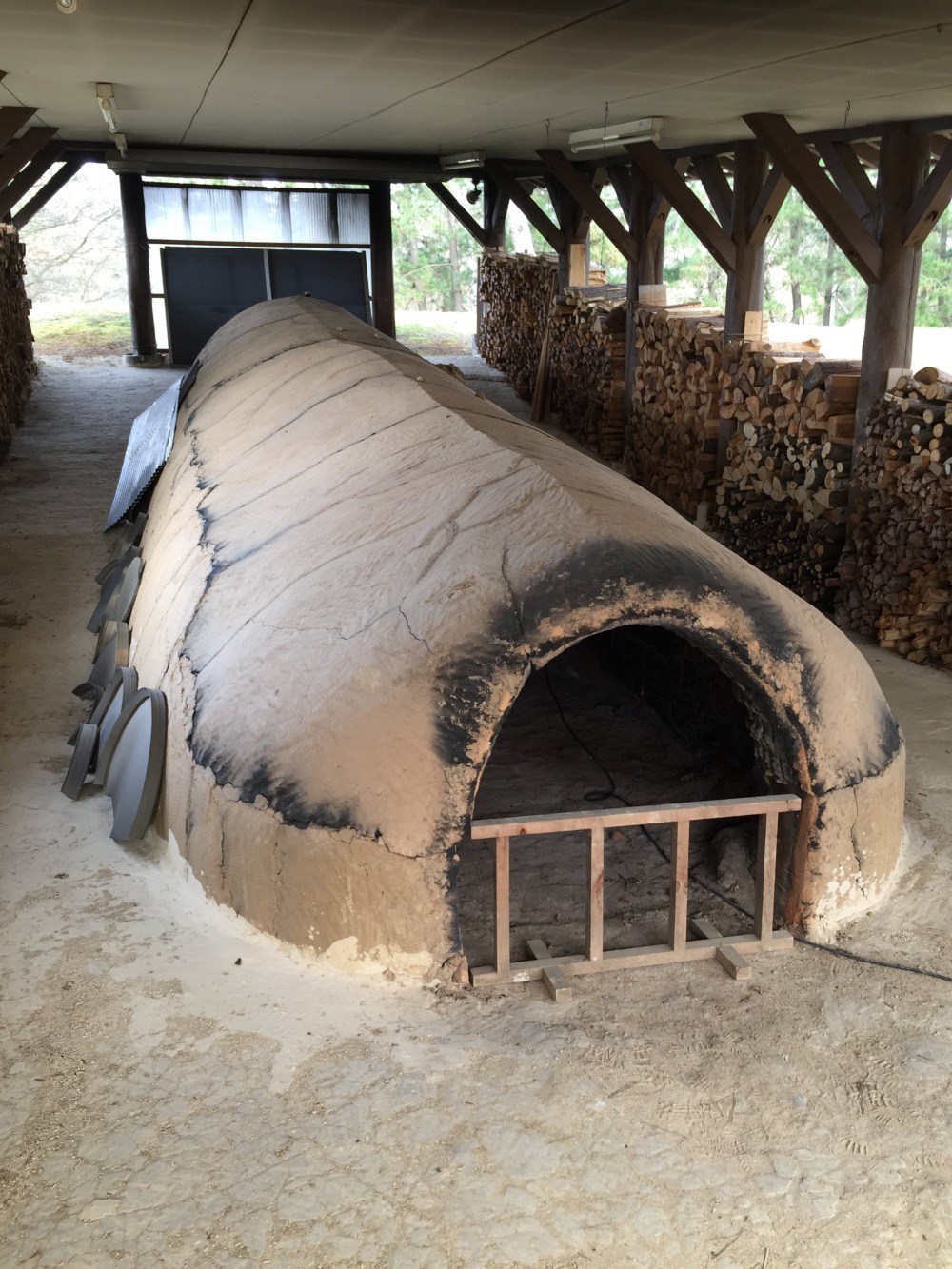Throughout Japan, there is a plethora of different kinds of traditional arts and crafts. In fact, there is said to be about 230 kinds in total (that are approved by the Ministry of Economy, Trade and Industry). Of the 230, 10 are from Ishikawa prefecture. The Noto Peninsula, in particular, is home to some unique traditional arts and crafts that are yet to be discovered by tourists and the general public.
About the Noto Peninsula

Noto Mitsukejima Island
The Noto Peninsula protrudes into the Sea of Japan. It is the largest peninsula on the western coast of Japan, and has a rocky, mountainous topography, similar to that of Italy’s. The peninsula is also where you can find the Shiroyone Senmaida terraced rice fields.

Shiroyone Senmaida
The name “Noto” was coined for the region around the 8th century. The area is spacious and filled with nature, and perfect for a road trip. You can enjoy fresh seafood on the peninsula at places like Wajima Morning Market, which is considered one of the three top morning markets in Japan.

Morning Market in Wajima
From lacquer wares to pottery to hand-woven textiles, the Noto Peninsula is rich in traditional crafts. It is said that traditional crafts flourished in the Noto Peninsula since thee region was a prominent trade hub. The crafts produced in the Noto Peninsula are sent throughout Japan and loved nationwide.
Traditional Crafts of the Noto Peninsula
Here are three representative crafts from the Noto Peninsula.
1. Wajima-nuri Lacquer Ware

Toso lacquer ware set
The Wajima-nuri style lacquer ware originated in the Noto peninsula. It is well known nationwide, and is one of the 230 traditional crafts that are approved by the Ministry of Economy, Trade and Industry.
The History of Wajima-nuri
Wajima-nuri originated in the city of Wajima on the Noto Peninsula. Wajima is also famous for the traditional Gojinjo-daiko drumming performance.

Wajimanuri products(写真提供:石川県観光連盟)
It is said that wajima-nuri originated as long as 600 years ago. The oldest found wajima-nuri item dates back to 1524, and is a vermillion door from Juzo-jinja Shrine. A different source states that wajima-muri originated from Negoro-nuri, another famous traditional painting technique from Wakayama prefecture.
Wajima-nuri products were popular during feudal Japan, and during the Edo Period (1603 – 1867), there were even orders for wajima-nuri products from areas as far as Hokkaido. Even after the westernization and industrialization of Japan of the Meiji Restoration (1868), wajima-nuri thrived as a popular item amongst the wealthy.
In 1975, wajima-nuri was designated as a national traditional craft. Two years later, it was officially allocated as an Important Non-tangible Cultural Property.
Characteristics of Wajima-nuri

Wajimanuri a sake cupa goblet
The lacquer used in wajima-nuri products is special since it uses a special undercoat that is mixed with ji-no-ko. Ji-no-ko is a special soil that is found on the Noto Peninsula, and has particles of volcanic ash and seaweed fossils in it. Because of this special lacquer mixture, wajima-nuri products are sturdy and fixable if broken. This technique was invented between the Azuchi-Momoyama Period and the Edo Period (1568 – 1867).
Also during that time, the nuno-kise technique was born as well. It is a technique to restore broken or cracked lacquer ware by pasting on a special cloth and painting on lacquer designated for nuno-kise. If you count all of the steps of nuno-kise, there are actually 124 in total!
Another unique characteristic of wajima-nuri is there is a specialist for each step of craft making. There is an expert for making the wooden base, painting, decorating and more. In such way, wajima-nuri played an important role for the economy of the town.
After being in the hands of many professional craftsmen, wajima-nuri lacquer ware is completed. You can feel its beauty through its lustrous, smooth, lacquered surface.

Wajima-nuri toso set with New Years decorations
2. Suzu-yaki Pottery

Suzu-yaki(写真提供:アイパブリッシング株式会社)
Suzu-yaki is a pre-modern style of pottery that dates back to the latter half of the Heian Period (794 – 1185). Traditional items of suzu-yaki include items such as vases and jars, but more modern items such as mug cups and beer glasses have been made in recent years.
Like wajima-nuri, suzu-yaki has a long history. However, suzu-yaki once discontinued, and made its return in 1976.
The History of Suzu-yaki
Suzu-yaki originated in the city of Suzu on the Noto Peninsula during the late 12th century. It was popular for its sturdy built that used local clay, and was shipped to places such as the Tohoku region and even Hokkaido.
Unfortunately, the popularity of suzu-yaki died down in the late 15th century. This was largely due to the emergence of other ceramic crafts, such as echizen-yaki from Fukui prefecture and bizen-yaki from Okayama prefecture. It is said that these new styles of pottery were easier to make and sell, since they were produced in a large oven. There is another theory that the trade route for suzu-yaki goods was blocked due to battles.
Around 1955, about 40 suzu-yaki items were discovered in Suzu. This created an opportunity for the rise and revival of suzu-yaki in modern day Japan.
Characteristics of Suzu-yaki

The main characteristic of suzu-yaki items is the color. Suzu-yaki items are usually black or a blueish gray, and are known for its simple and classy design. The smoky colors of the items are produced by the tunnel-style oven. These tunnel-style ovens are completely closed while the items are baking, causing iron particles to rise from the tunnel walls, which create the unique colors.
Suzu-yaki ceramics are slowly surely making a comeback. Recent suzu-yaki items focus on keeping the traditional essence of the art while adding elements of modern-day life to it.
3. Nanao Japanese Candles

Japanese candle
Nanao Japanese Candles are traditional candles that come from the city of Nanao on the Noto Peninsula. The city offers a beautiful view of the Nanaoy Bay and Notojima Island.
Japanese Candles vs. Western Candles

There is actually quite a difference between Japanese candles and your typical Western candles.
The main difference between two are the ingredients. Japanese candles are made from tree wax and washi paper, while western candles typically use paraffin and string. The flames of Japanese candles have a softer color, which is caused by the lower burning temperature.
History of Nanao Japanese Candles
Candles entered Japan around the time Buddhism was introduced to the country. However, candles were not commonly used in Japan at the time, since they were mostly imported from China and were rare.
Around the Edo Period, the trees used for the wax were imported into Japan. The trees made their way into the Nanao area, and candles were produced there. The candles were distributed especially throughout northern Japan, since Nanao was an important ship hub for the area.
Nanao Japanese Candles as Souvenirs
These candles make a great souvenir. TAKAZAWA CANDLE in the city of Nanao is the only shop in Ishikawa that creates Japanese candles. They sell all sorts of candles that vary in color and size that would fit any occasion.
More traditional crafts from the Noto Peninsula
The Noto Peninsula, located a 2-hour drive from the capital city of Kanazawa, is home to many more traditional crafts, such as the Noto-jofu fabric and the Nanao Buddhist altar. Experience traditional Noto artistry and pay a visit to the Noto Peninsula!
















_600x400.jpg)















_600x400.jpg)


